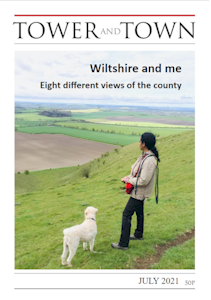

Tower and Town, July 2021 (view the full edition) (view the full edition)The Mayfly Hatch
Mayfly nymphs spend up to two years in the river before hatching, mating and dying in a day – hence the Latin name Ephemeroptera. Once hatched, the flies “dance” frenetically above the river, streaming up and down in order to attract a mate. This is what creates the extraordinary spectacle, before thousands of imagoes (fully hatched mayfly) fall onto the river and drift down on the current like a flotilla of small sailboats. The Kennet above Chilton Foliat is generally too fast and lacking in sediment to support a large mayfly hatch, but between Newbury and Hungerford the river is larger and the hatches can be prolific. It’s not only trout that fatten up on mayfly. Chub, roach and dace will join the feast, as will ducks, bats and swallows. Fledgling moorhen chicks can be seen chasing and toying with the imagoes as they pass. Sometimes the water’s surface seems ready to boil over with activity. Fishermen come from all over the country and indeed the world to take advantage. Like most things, the mayfly were late this year, not appearing in earnest until June. But the wait was worth it and the hatch was enormous when it came. On the riverbank some evenings, the air was so thick with flylife it resembled smoke and the continual roll and plop of fish in a feeding frenzy set this angler’s heart racing. The best places to see the mayfly are any of the footpaths that cross the Kennet around Kintbury. Mayfly also come off along the River Dun/canal between Hungerford and Great Bedwyn. Look out for the mid-May cow parsley bloom in hedgerows and verges – that’s normally a sign that the mayfly are ready to dance. Iain Mills |